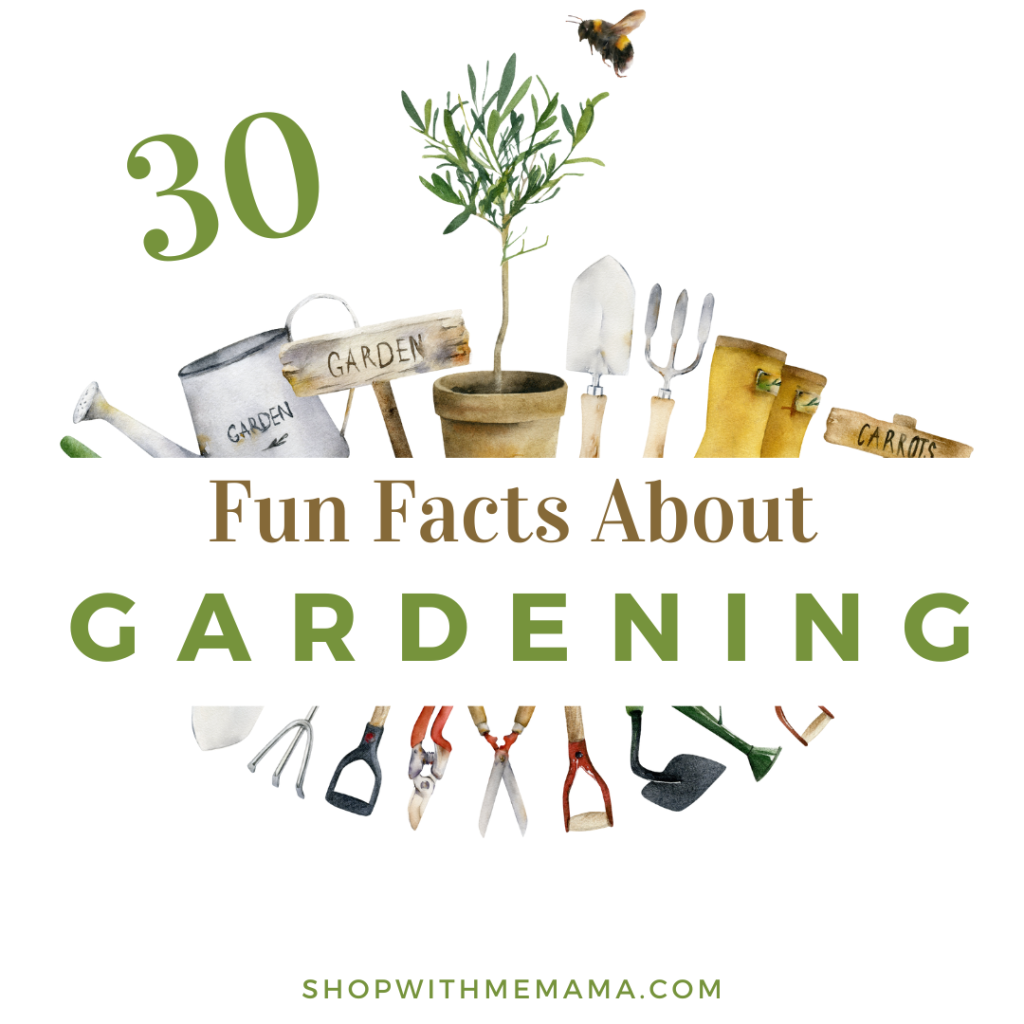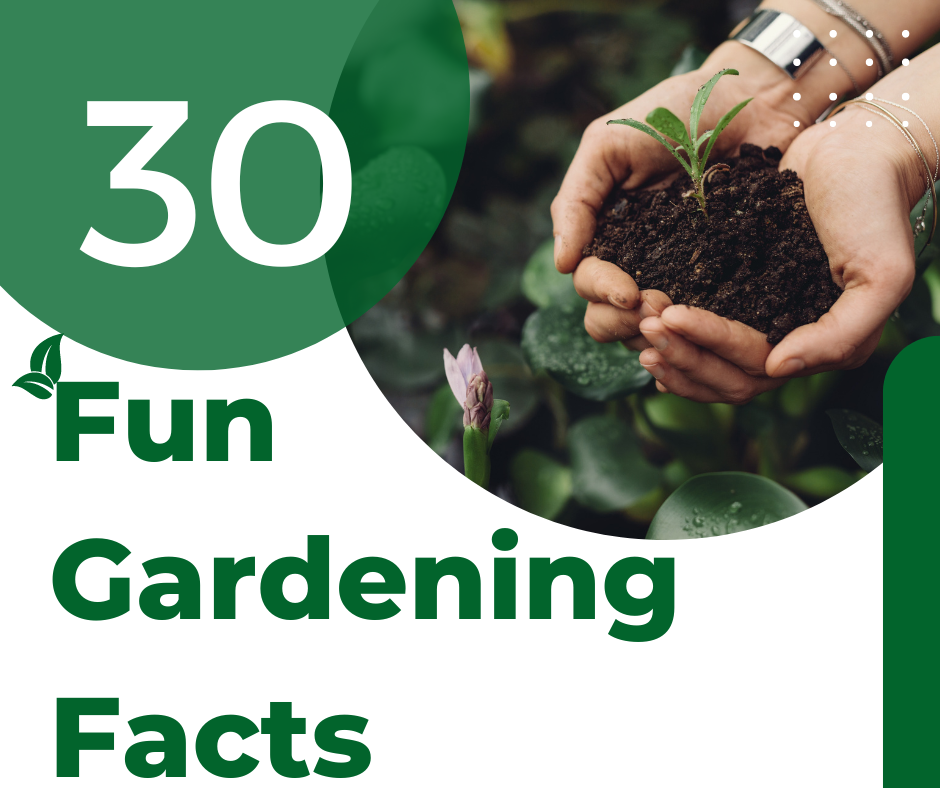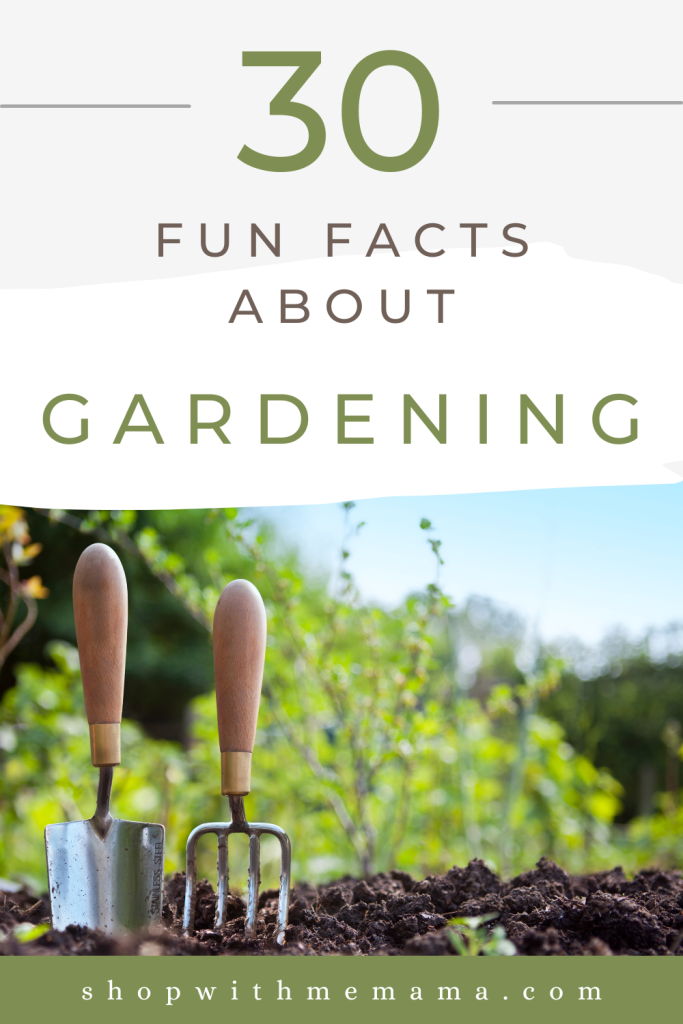In this post, we will discuss some fun facts about gardening! Do you take pleasure and pride in tending a garden? We all know that gardening can be a labor of love, but did you know it’s also been incredibly beneficial for centuries?
If you have ever been to gorgeous Chinese gardens or Japanese gardens (find Japanese garden facts here), you know what I am talking about. There are so many different gardens! And, you can have a garden anywhere there is dirt!
My favorite garden is the community gardens, so fun! From providing your own food sources in these modern times, for early civilizations to improving economy, there are many incredible facts about gardening that few people know.
We’ll be exploring these fun gardening facts and giving you some tips too! Whether you’re part of the new gardeners group or want to brush up on your green thumb knowledge or learn about grow tent gardening, join us as we learn more about what makes our beloved hobby so great!
You don’t need a college degree to grow your own food or to create a lush garden! Gardens have such a rich history and it is fun to find out more about them! So grab your kids and let’s get to gardening!
*This post includes my affiliate link

30 Fun Facts About Gardening
1. Some people who study history think that the first gardens were only made to look pretty, not just for growing food, and were made in ancient Egypt around 2000 BC. These fancy gardens were mainly for rich people.
2. Butterflies are particular with what they pollinate! So what plants/weeds do butterflies like most?
They enjoy lavender, butterfly bush, swamp milkweed, aster, Oregano, Blazing Star Flowers, Pot Marigolds, Bee Balm, Butterfly Weed, Black-eyed Susans, and more!
3. There are many different types of gardening, including container gardening, raised bed gardens, flower gardening, vegetable gardening, and orchard gardening, (among so many others).
4. Moon gardening involves aligning planting, pruning, and harvesting activities with the phases of the moon, based on the belief that lunar cycles influence plant growth.
The amount of moonlight at different times helps the growth of plants. As the moonlight increases it helps with leaf growth.
After the full moon, the moonlight decreases, putting energy into the plant roots. Because of this, the above-ground plant growth will slow down again.
5. Organic gardening is a form of gardening that avoids using chemicals or pesticides. Organic gardening encourages the natural growth of plants and soil through composting and crop rotation techniques among other things.
6. Planting cover crops is an important part of organic gardening as it prevents soil erosion and increases soil fertility by adding nutrients such as nitrogen, phosphorus, potassium, and others to the soil naturally.
7. Rhizomes (also called creeping root stalks) are underground stems that grow horizontally and can form roots that grow into new plants, such as ginger and bamboo.
8. Composting is an essential part of gardening and helps to provide nutrients for the soil. It also helps the soil retain its moisture and nutrients better.
Plus, it attracts beneficial organisms to the soil. Composting also helps with the vitamin content in the plant your growing.
9 . If you want to grow fish and vegetables, then Aquaponics systems are for you! They combine hydroponics and aquaculture providing both a source of sustainable food production (vegetables like green beans) with fish as well as ornamental ponds full of colorful flora & fauna species to look at while enjoying your garden view.
With this type of garden, you can grow a lot more food using less water, land/space, and labor than traditional gardens.
10 . The world’s largest flower, the Rafflesia Arnoldii, can grow up to three feet in diameter and can weigh 20 pounds.
It was discovered in January 2020! However, these flowers are very rare and may be extinct soon 🙁 It blooms for only 1 week and it smells horrid like rotting flesh!
They say it smells that way to attract flies and carrion beetles. Rafflesia is a genus of plants that all smell terrible in order to get pollinated. Alrighty then!
11 . The oldest living aspen tree in the world is the Pando (also known as the Trembling Giant) which is found in Utah. And, each genetically identical tree (or stem) is connected by a single root system!
12 . Certain plants, such as the Madagascar periwinkle, have a history of utilization in traditional medicine due to their potential anti-cancer attributes, contributing to the creation of significant chemotherapy medications.
Vincristine and vinblastine, extracted from the periwinkle plant, are established pharmaceutical substances in cancer treatment and are used for conditions such as Hodgkin’s disease, lymphocytic leukemia, and various other forms of cancer.
13. Hummingbirds are attracted to bright colors making them great pollinators helping spread pollen among flowers – they love brightly colored flowerers that are tubular, so try adding these into your flower garden!
14. Companion planting involves grouping together different kinds of plants that benefit each other’s growth creating a positive environment.
Some examples may include garlic and onions with beans and peas or cabbages with strawberries (average strawberry).
15. Good tools are essential when it comes to successful gardening, find comfortable materials like metal trowels or sturdy kneeling mats with adjustable handles that offer comfort.

16. Diseases can affect different plants, even healthy-looking mature trees & shrubs if left untreated – keep an eye out for discolored leaves, weak stems, or fungus spots. You should identify these early by inspecting them (your garden), regularly.
17. Weed control is so important. Help prevent too many weeds by minimizing soil disturbance as much as possible.
Don’t give weeds the chance to sprout by adding mulch. Mulch serves a dual purpose, adding nutrition through its decomposing process while also giving weeds a hard time growing. Weeds growing are a plant distress call so do not ignore this!
18. Perennials can live for multiple years (3 to up to 15 years!!!) and produce beautiful flowers and foliage.
19. The process of air layering allows for the propagation of plants by encouraging roots to form on a stem while still attached to the parent plant, enabling the creation of new plants. Learn more about that here.
20. Indoor gardening, using grow lights and controlled environments, can allow for year-round gardening and food production. This would be perfect for growing ghost pepper because they love growing indoors or in a greenhouse.
21. Having a garden and maintaining one is great physical activity! From pulling those weeds, to watering and keeping it fertilized, it is a great way to stay active outside and get fit!
22. There are more than 10,000 varieties of tomatoes!!!! This is exciting because there are SO many known species of plants!
23. One of the most expensive flower in the world is the Saffron Crocus. You have to harvest it very gently and can only be processed by hand. It is said that an ounce of Saffron is valued at more than an ounce of gold! Holy goodness!
24. Parasitic wasps are tiny wasps that are good for gardeners and farmers because they attack and kill many kinds of pests and insects. And, like honeybees and other pollinators, they carry pollen from plant to plant!
25. Snapdragon flowers are edible (I was a florist for over 9 years and never knew this!). The seeds are sometimes used to extract edible oils, and the leaves and flowers have anti-inflammatory properties! Super cool to learn this!
26. The Inca Indians in Peru grew the very first potatoes! So it wasn’t Idaho after all…🤔
27. Species of edible plants include Snapdragon flowers, Nettle, Dandelions, Curled Dock, and many more.
28. The wishbone flower is one of the easiest flowers to grow and it comes in many different colors!
It can grow in the sun or the shade and is low maintenance. This makes this flower perfect for garden beds, around the border of a garden or walkway (etc.).
This flower attracts little hummingbirds! Deers do not like it. Hmmm... Sounds like a flower I wouldn’t kill! I might need this one!
29. Elephant Grass (also called Pennisetum purpureum) is a versatile plant that serves various purposes.
Its young leaves and shoots are edible for humans and can be utilized in soups and other foods. The culms are suitable for crafting fences, and the entire plant is commonly used for thatching. Also, its robust root system is effective in preventing river bank erosion. So many benefits!
30. The word pineapple came from the Spaniards who at first, named the fruit ‘pina’ because it resembled the look of a pinecone.
Those are my top 30 Fun Facts About Gardening! It was so fun finding out about these fun facts about gardening! I learned SO much today!
The first main reason to have a garden is to grow food or pretty flowers (duh!) but the second main reason is for your own wellbeing and overall health! It is so good for your mental health (except for zen gardens because those help me with anxiety!).
Plus, we all know the most rewarding activities are done in the garden! Having your own garden is so nice and great for your mental health! Getting outdoors and getting a little dirty has never been so dang fun!
We hope you have found this blog post about Fun Facts About Gardening interesting enlightening and inspiring.
From the largest (and stinkiest!) flower to uncovering how many varieties of tomatoes exist, it’s clear there is significantly more to gardening than it appears on the surface and so many fun facts I never knew about!
Important Facts About Growing A Garden
But now, how about some of the most important facts to learn about growing a garden? I listed my top 7, below! (This is a more serious section 😁)
*Knowing what each plant needs to thrive and grow (water, temp, sun, etc.).
*The weather where you will be planting a garden. Does it receive a lot of sun, too much shade, etc?
*Having the best soil possible (lots of healthy, compost soil) and tilling it to a depth of about 12-14 inches so you have plenty of good, loose soil to plant your seeds in.
*Learning how to plant seeds or young plants. Do your research!
*How to keep pests away (that includes animals too).
*Being consistent with taking care of your growing garden. That includes weeding, watering, and pruning when necessary.
*Learn the importance of growing different plants together that will help them thrive and sustain each other.
As we mentioned before, tending a garden can be incredibly rewarding and yields more than just delicious food.
Gardening promotes healthy eating habits, reduces stress, brings joy, and even gives the gardener something to be proud of.
World Naked Gardening Day!!!
Woohoo!!! Do NOT forget!! World Naked Gardening Day is on the first Saturday in May. That is on Saturday, May 4th this year!!! Yay!! Will you be gardening in the nude? I probably will not be, but there are plenty of people who do enjoy that! So funny!
Have you ever planted a garden before? If not, now is as good a time as any to dive into the world of horticulture and experience all its wonders.
Do you have anything you want to add to my post about 30 Fun Facts About Gardening? If you do, please leave yours below in a comment!
Until next time,
Kim
PIN IT
